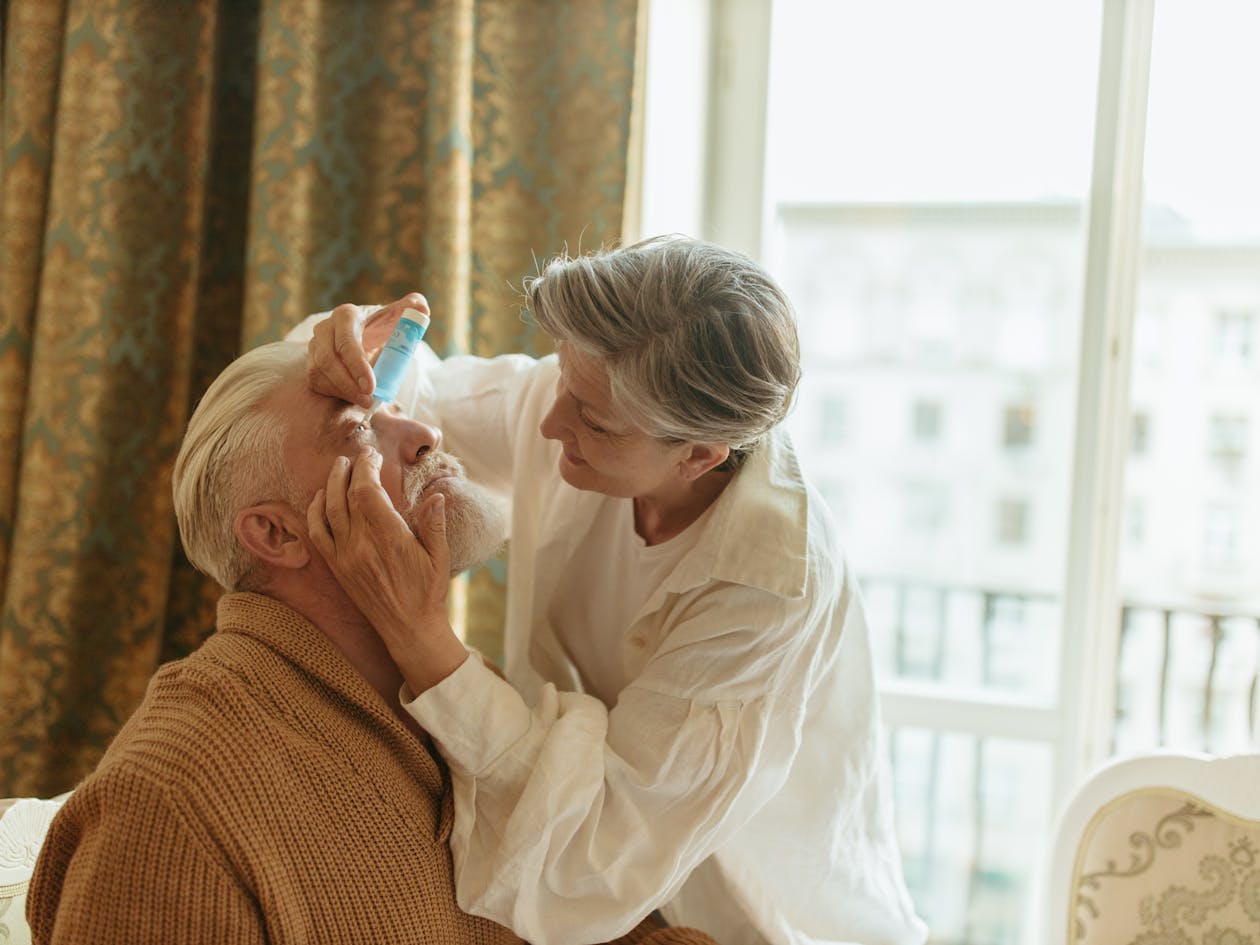One Daily Eye Drop Could Replace Your Reading Glasses in 30 Minutes

You reach for the menu at your favorite restaurant. Words blur into meaningless shapes. Reading glasses come out of your pocket for the third time today. Sound familiar?
Around 128 million American adults live with presbyopia, that age-related condition where arms suddenly feel too short to hold text at a readable distance. For decades, options remained limited to glasses, contacts, or invasive surgery. Now, scientists have developed something different.
VIZZ eye drops promise to restore near vision for up to 10 hours with a single daily dose. No glasses. No surgery. Just one drop in each eye each morning.
But does it work? And what makes these drops different from everything else doctors have tried?
What VIZZ Actually Does
VIZZ uses aceclidine as its active ingredient. You won’t find this chemical in any other approved eye treatment for presbyopia. Aceclidine works by contracting your iris sphincter muscle, making your pupil smaller.
Why does that matter? A smaller pupil creates what scientists call a pinhole effect. When light enters your eye through a tiny opening, your depth of focus increases. Objects at different distances stay sharp without your lens needing to change shape.
Most presbyopia treatments force your eye to accommodate differently or correct vision at only one distance. VIZZ takes a different approach. It achieves a pupil size under 2mm, extending your depth of focus without causing a myopic shift. Your distance vision stays clear while near vision improves.
Clinical trials tested this mechanism across three separate studies. Scientists wanted to know if the pinhole effect would translate into real vision improvements for people struggling to read, text, or work on computers.
Results That Turned Heads

LENZ Therapeutics ran three randomized, double-masked trials called CLARITY 1, 2, and 3. Researchers enrolled 466 participants in the first two studies and 217 in the third.
Participants received one drop daily for 42 days in CLARITY 1 and 2. CLARITY 3 extended testing to six months. Everyone using VIZZ showed measurable near vision improvements within 30 minutes of application.
Numbers tell the story. 71% of trial participants gained three lines or more of vision improvement at both the 30-minute and three-hour marks. Even at 10 hours, 40% maintained these gains.
Both CLARITY 1 and 2 hit every primary and secondary endpoint. Results replicated across different groups of people, different ages, and different baseline vision levels.
Dr. Marc Bloomenstein of Schwartz Laser Eye Care Center watched these results during his role as a clinical investigator. His reaction? “This FDA approval represents a disruptive paradigm shift in treatment options for millions of people who are frustrated and struggling with the inevitable age-related loss of their near vision.”
Eef Schimmelpennink, President and CEO of LENZ Therapeutics, emphasized the scope of this development. “The FDA approval of VIZZ is a defining moment for LENZ and represents a transformative improvement in the available treatment options for the 128 million adults living with blurry near vision in the United States.”
Researchers tracked over 30,000 treatment days across all three studies. Zero serious treatment-related adverse events occurred during that period. For a daily medication targeting such a large population, safety matters as much as efficacy.
Side Effects You Should Know About
No medication comes without potential drawbacks. VIZZ causes side effects in some users, though most remain mild and temporary.
Installation site irritation affects 20% of users. Your eyes might feel uncomfortable right after you apply the drops. Dim vision occurs in 16% of cases. Your pupils shrink to let in less light, so environments may appear darker for a while.
Headaches trouble 13% of users. Red eyes show up less often, affecting 8% through conjunctival hyperemia and 7% through ocular hyperemia. Most people report these effects disappear on their own without treatment.
Serious reactions remain rare but possible. Severe allergic reactions can occur. Retinal detachment, while uncommon, requires immediate medical attention. If you see flashing lights, floaters, or sudden vision loss after using VIZZ, contact your eye doctor right away.
Your vision might appear dim or dark after application. Avoid driving or operating machinery until your vision returns to normal. Safety matters more than convenience.
When VIZZ Isn’t Right for You

Some people cannot use VIZZ safely. Anyone allergic to aceclidine or other ingredients should avoid these drops. People with a history of iritis face contraindications.
Contact lens wearers need extra steps. Remove your contacts before applying VIZZ. Wait at least 10 minutes before putting them back in. Chemical interactions between the drops and your lenses could cause problems.
Multiple eye medications require careful timing. Space out different drops by at least five minutes. Your eyes need time to absorb each medication properly.
Pregnant women face uncertainty. Scientists lack sufficient data about VIZZ safety during pregnancy. Talk with your doctor about risks and benefits before use.
Proper application technique prevents contamination. Never let the vial tip touch your eye or any surface. Bacteria and other contaminants could cause serious infections. Throw away each vial immediately after use, even if liquid remains inside.
How It Stacks Up Against Other Options
Glasses work but inconvenience users. You grab them to read, then remove them to see across the room. Bifocals help but compromise visual quality at certain distances. Many people report feeling bothered by constant switching.
Contact lenses offer another path. Multifocal contacts correct near vision while maintaining distance clarity. However, adaptation takes time. Dryness and discomfort push many users away from this option.
Surgery promises permanent correction. Monovision LASIK, corneal inlays, and multifocal procedures all exist. Yet surgical approaches carry irreversible risks. Reduced contrast sensitivity bothers some patients. Dysphotopsia, or unwanted visual phenomena, affects others. Regression can occur, meaning your vision might drift back toward presbyopia over time.
VIZZ offers reversibility. Effects wear off each day. If you experience problems, stop using the drops. Your eyes return to baseline without permanent changes.
Dr. Bloomenstein sees clear advantages. “I believe this will be a welcome solution for both optometrists and ophthalmologists who will now be able to offer a highly effective and sought-after presbyopia treatment that could immediately become the standard of care, with a product profile that will meet our patients’ needs.”
Getting Your Hands on It

LENZ Therapeutics plans to distribute samples starting in October 2025. Full commercial product should reach broad availability by mid-fourth quarter 2025.
Pricing remains unclear. Neither the company nor insurance providers have announced costs. Will insurance cover VIZZ? How much will patients pay out of pocket? Answers to these questions will shape how many people can access this treatment.
Availability stays limited to the United States for now. FDA approval covers only American markets. Other countries will need separate regulatory approvals before their citizens can purchase VIZZ.
A Promising Option That Needs Real World Proof
FDA approves breakthrough eye drops that fix near vision without glasses | Bronwyn Thompson, New Atlas
— Owen Gregorian (@OwenGregorian) August 8, 2025
The first aceclidine-based eye drop to improve near vision in adults with presbyopia, which affects more than 100 million adults in the US alone, has been approved by the Food… pic.twitter.com/ZD381IZcOW
VIZZ represents the first aceclidine-based treatment approved anywhere in the world for presbyopia. Clinical trials showed rapid, reproducible improvements in near vision without serious safety concerns.
Yet questions remain. Scientists need more data on long-term use, comparative effectiveness, and real-world adherence. People need clear information about costs and insurance coverage.
For younger presbyopes tired of reaching for reading glasses, VIZZ offers an attractive alternative. People who want to avoid surgery now have a noninvasive option. Anyone juggling multiple pairs of glasses might find relief in a single daily drop.
Peer-reviewed publication of the CLARITY trials will help doctors evaluate this treatment more thoroughly. Continued monitoring after commercial launch will reveal how VIZZ performs across diverse populations and longer timeframes.
October 2025 brings the first samples to American eye care providers. By year end, widespread availability should let millions of adults test whether VIZZ lives up to its promise.
Your menu no longer needs to be a blur. Whether VIZZ becomes your solution depends on your specific needs, your doctor’s recommendations, and evidence that continues to accumulate in the months ahead.
Loading...

